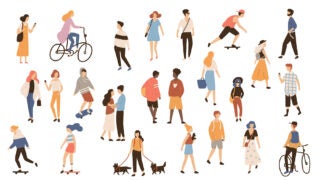Annette Kim, director of the Spatial Analysis Lab at the USC Price School, shares lessons learned from the Vietnamese city’s handling of contested public spaces.
Urban Planning
News Listing
Samantha Ellman and Natalie Ikhrata’s podcast explains the impact and importance of urban planning.
Around the world, people are using a USC Price professor’s research to make their cities healthier and more sustainable.
Students’ capstone projects focus on transforming a downtown property to meet community needs.
The school provided the perfect opportunity for Colin Montoute to develop his passion creating public spaces that enable civic relationships and economic opportunities to thrive.
USC spatial scientist John Wilson discusses the benefits of more trees in the urban core, the differences between Beverly Hills and Boyle Heights, and how trees will shape L.A.’s future.
From the gig economy to remote offices, USC business and policy experts imagine the future of work.
As more companies go remote, the predicted demise of big cities — and their downtown working hubs — may be overblown, a USC real estate expert says.
Pairs of Trojans were tasked with producing proposals for two L.A. sites, providing a glimpse into the real-world relationship between real estate developers and city planners.
Why are there no more lesbian bars in Los Angeles? That simple question piqued Marisa Turesky’s interest.








